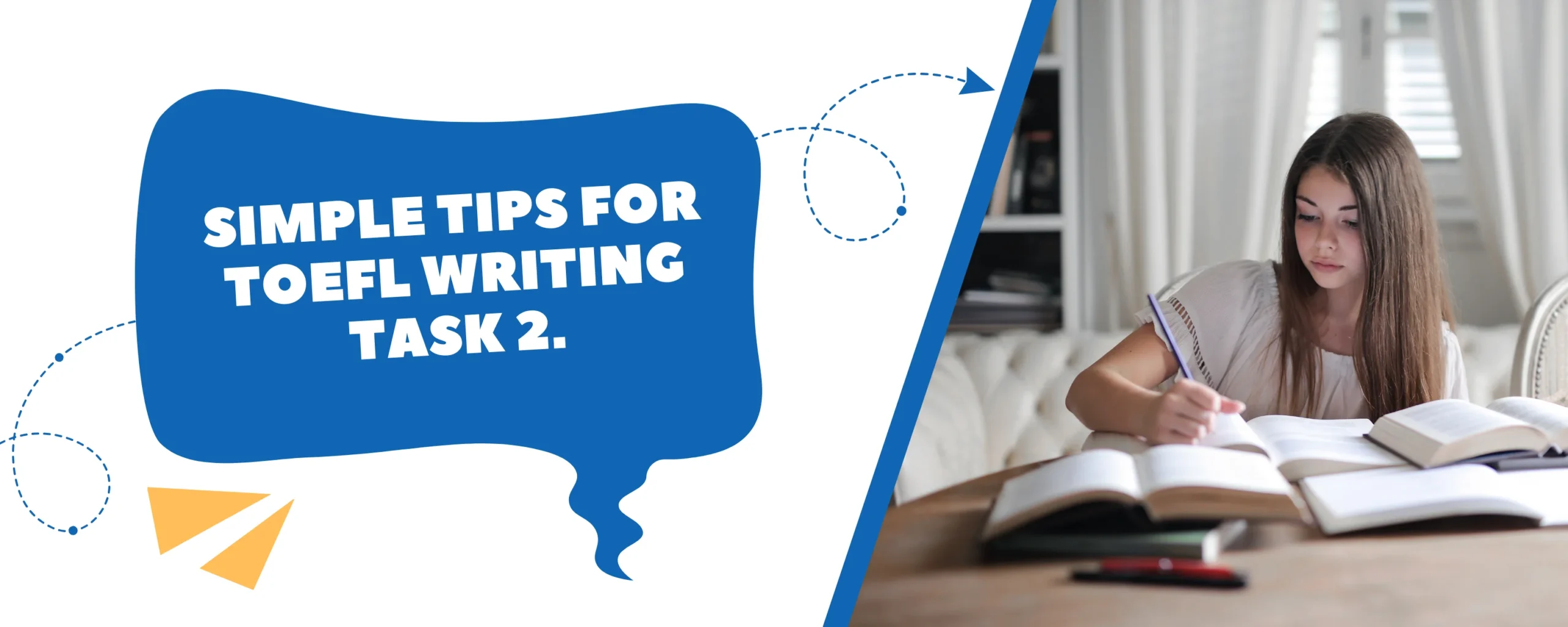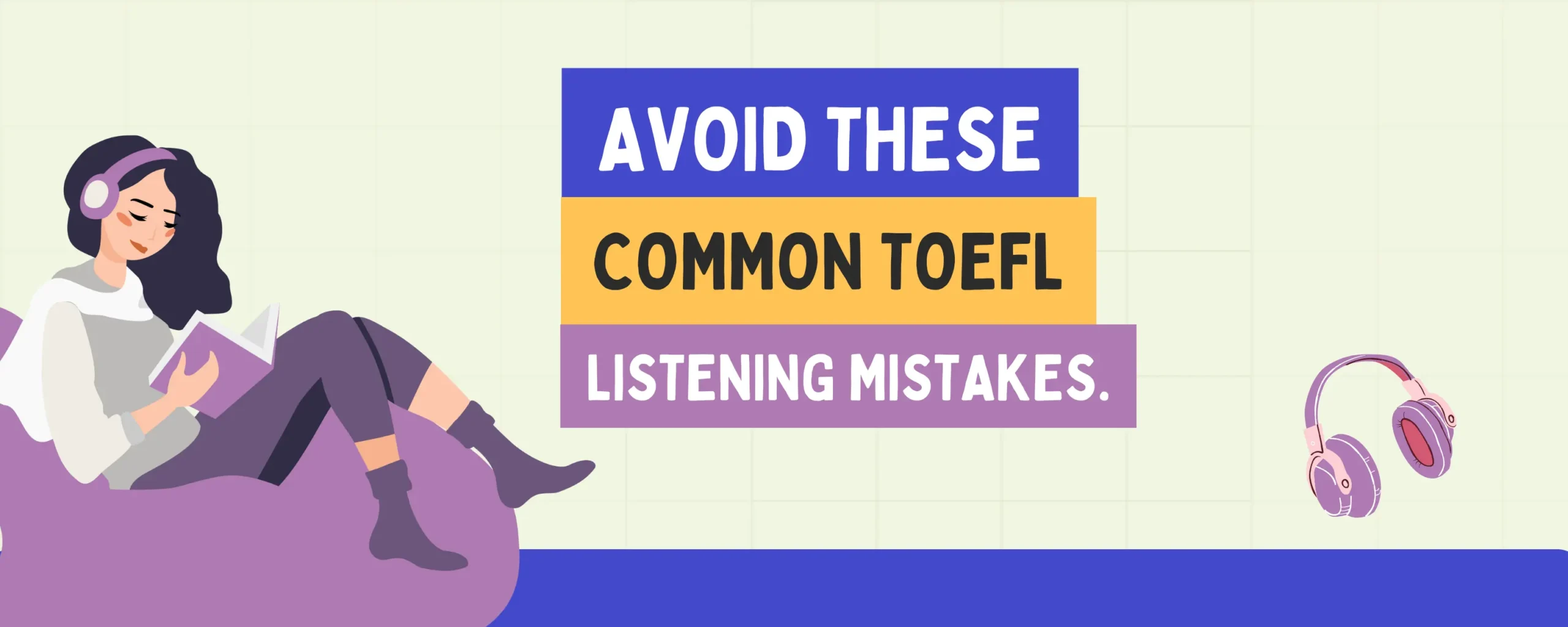The TOEFL exam is one of the most widely used English proficiency exams for candidates wanting to study abroad. The Educational Testing Service (ETS) is the body that conducts the TOEFL exam with an aim to measure the level of proficiency of a non-native English speaker. ETS has recently shortened the TOEFL exam to less than 2 hours, incorporating several improvements to enhance the overall test experience.
Understanding the TOEFL exam pattern is crucial for anyone aiming to achieve a high score. It not only familiarizes you with the structure of the test but also helps in effective time management and building confidence. A comprehensive grasp of each section’s layout, types of questions, and time limits will allow you to focus your preparation and approach the test day with assurance. Read the article to learn more about the detailed concepts, question types, duration, and test patterns in the syllabus to prepare and excel in the TOEFL exam.
TOEFL Exam Pattern Overview
To assess your ability to communicate, the TOEFL exam format is divided into four TOEFL sections, namely: Listening, Reading, Speaking, and Writing which extend over the duration of 2 hours. The new TOEFL exam pattern contains 48 questions and 6 tasks in total. Each section of TOEFL score ranges on a scale of 0-30 level, and the total score is scaled from 0-120 level.
There are three types of the test: PBT – Paper-based Test (held at both the TOEFL test centre and at home, TOEFL iBT (Internet-based format) and TOEFL at Home (home-based TOEFL test). The TOEFL Internet-based Test format has gradually replaced the computer-based test (CBT) and paper-based test (PBT) formats since its launch in late 2005, though paper-based testing is still used in some regions. The TOEFL iBT and the TOEFL iBT Home Edition are nearly identical.
The TOEFL exam pattern consists of the number of questions, time duration and key tasks that are associated with each section of the TOEFL examination. Given below is the highlight of exam pattern associated with the TOEFL test:
| Section | Number of Questions & Duration iBT | Description |
| Reading | 20 questions: 35 minutes | Candidates would be expected to read passages and answer questions based on them. |
| Listening | 28 questions: 36 minutes | Candidates have to listen to brief lectures or classroom discussions and respond to questions in the given time. |
| Speaking | 4 tasks: 16 minutes | Test takers would be required to discuss familiar topics and material they’ve read and listened to. |
| Writing | 2 tasks: 29 minutes | Candidates read a passage, listen to a recording and type a response supporting an opinion. |
| Structure and Written Expression | Nil | Fill in blanks in sentences and find errors in written texts and evaluate grammar and writing skills. |
| Scoring | 120 | – |
Exam Pattern for Listening Section
| No. of Tasks | 3 Lectures (3-5 minutes each) 2 Conversations (about 3 minutes each) |
| Description | Listen and answer the questions based on the lectures & conversations recording. |
| No. of Questions | 28 Questions Lectures (6 questions each) = 18 2 Conversations (5 questions each) = 10 |
| Duration | 36 Minutes |
| Type of Questions | Objective-type, Multiple Type Questions: • Gist of the content and purpose-related questions • Details-related questions • Speaker’s intent-related questions • Speaker’s attitude or feelings-related questions • Structure of the speech-related questions • Conclusion-related questions • Implied information-based questions |
| Evaluation Criteria | Basic Comprehension, Understanding of Attitude and degree of certainty, Connecting Information |
| Score Scale | 0-30 |
Exam Pattern for Reading Section
| No. of Tasks | 2 passages of 700 words |
| Description | Read and answer the questions based on the passages. |
| No. of Questions | 20 Questions (10 questions per passage) |
| Duration | 35 Minutes |
| Type of Questions | Objective-type, Multiple Choice Questions:· · Factual Information Questions · Negative Factual Information Questions · Inference Questions · Rhetorical Purpose Questions · Reading Vocabulary Questions · Sentence Simplification Questions · Insert Text Questions · Prose Summary Questions |
| Evaluation Criteria | Understanding of texts in post-secondary education, Drawing logical conclusions, Summarising and drawing inferences from the text. |
| Score Scale (raw scores converted to scores on the scale) | 0-30 |
Exam Pattern for Writing Section
| No. of Tasks | 2 Tasks · 1 Integrated Task (Read – Listen – Write) · 2 Writing for an Academic Discussion Task |
| Description | Task 1: You need to read a short passage and a short lecture. And, write your response summarizing the points based on what you have read and listened to. Task 2: You will be given a question and asked to write an essay expressing your opinion with reasons and examples from your own knowledge and experience. |
| No. of Questions | 2 Questions |
| Duration | Total 30 Minutes Task 1 – 20 Minutes Task 2 – 10 Minutes |
| Type of Questions | Read a passage, listen to a lecture, and write a summary on an academic topic. Write an essay expressing your opinion on a given topic. |
| Evaluation Criteria | Language abilities, idea construction, writing organization, capacity to back up a point with evidence, connecting details and contrasting viewpoints, sentence and argument formation, conclusion. |
| Score Scale | 0-30 |
Exam Pattern for Speaking Section
| No. of Tasks | 4 Tasks 1 Independent Speaking Task 2 Integrated Speaking Tasks (Reading and Listening, Listening and Speaking, Listening) |
| Description | Task 1: You’ll be given a familiar topic and asked a question that prompts you to share your thoughts or experiences. Task 2,3,4: Combines listening, reading and speaking. You’ll listen to a short academic passage or conversation, followed by a question that requires you to summarize key points and express your own ideas based on the information presented. |
| No. of Questions | 4 Questions |
| Duration | 16 Minutes |
| Type of Questions | Speaking about opinions and preferences.Speaking about topics from lectures and texts. |
| Evaluation Criteria | Delivery (Fluency, Pronunciation, Intonation and Stress) Language Use (Vocabulary, Grammar) Content (Completeness, Coherence and Cohesion) |
| Score Scale | 0-30 |
TOEFL Scoring Pattern 2024
To understand the TOEFL exam score, candidates need to understand how each section is scored. Each section is scored between 0 and 30, resulting in a total score range of 0 to 120. This comprehensive evaluation is conducted using a blend of automated AI scoring and Certified Human Raters, ensuring accuracy and fairness in the scoring process. Here is the TOEFL score table, evaluation criteria and the proficiency level:
| Skill | Score Range | Evaluation Criteria | Level |
| Reading | 0-30 | Reading Comprehension, Identifying main ideas and structure, Inference, Fact vs. Opinion | Advanced (24–30) High-Intermediate (18–23) Low-Intermediate (4–17) Below Low-Intermediate (0–3) |
| Listening | 0-30 | Understanding lectures and conversations, Noting details, Following arguments. | Advanced (22–30) High-Intermediate (17–21) Low-Intermediate (9–16) Below Low-Intermediate (0–8) |
| Speaking | 0-4 points converted to 0-30 score scale | Fluency, Pronunciation, Grammar and Vocabulary, Content, Task Fulfillment, Coherence and Cohesion | Advanced (25–30) High-Intermediate (20–24) Low-Intermediate (16–19) Basic (10–15) Below Basic (0–9) |
| Writing | 0-5 points converted to 0-30 score scale | Task Fulfillment, Development and Organization, Grammar and Vocabulary, Coherence and Cohesion, Standard English Usage | Advanced (24–30) High-Intermediate (17–23) Low-Intermediate (13–16) Basic (7–12) Below Basic (0–6) |
TOEFL Reading Score
Although the exact scoring algorithm is not disclosed by ETS, your performance is evaluated based on the number of correct answers, with each correct response contributing to your raw score. This raw score is then converted into a scaled score, ranging from 0 to 30. Improving your TOEFL Reading score requires a strategic approach and consistent practice.
TOEFL Listening Score
The TOEFL Listening section is graded from 0 to 30. The number of correct answers you provide determines your score, which is then converted from a raw score to a scaled score ranging from 0 to 30. A simple formula to estimate your scaled score is: (RAW/28) * 30 = SCALED. To excel in the Listening section, familiarize yourself with different accents, practice effective note-taking, and understand the common question types.
TOEFL Speaking Score
The Speaking section of the TOEFL is distinct in its scoring approach. Each of the speaking tasks is assessed according to an ETS speaking rubric, on a scale of 0 to 4 based on three main criteria: Delivery, Language Use, and Topic Development.
The raw score range of this section (0-16) is then scaled to a range of 0 to 30. ETS uses a combination of human raters and AI to assess your responses, ensuring a balanced evaluation. Effective preparation for the Speaking section involves practicing a variety of speaking topics, understanding the scoring rubrics, and employing task-specific strategies.
TOEFL Writing Score
The Writing section consists of two tasks: Integrated Writing and Independent Writing. Each essay is scored on with ETS writing rubrics on a scale of 0 to 5, and these raw scores (0-10) are then converted to a scaled score ranging from 0 to 30. Both tasks are evaluated by human graders and an ETS “e-rater” software, ensuring that your performance is judged holistically and objectively. Equip yourself with the specific techniques needed to craft high-scoring essays.
Conclusion
To succeed in the TOEFL exam, it’s essential to understand each section’s pattern thoroughly. Knowing what to expect allows you to craft a targeted preparation strategy, practice effectively, and approach the exam with confidence. A strong grasp of the exam structure will undoubtedly enhance your performance. Accessing official practice materials as well as online resources can greatly enhance your preparation.
With the right approach, you can achieve a high score and open doors to academic and professional opportunities worldwide.
Frequently Asked Questions
What is the format of the TOEFL exam?
The TOEFL exam is conducted in internet-based (iBT) and paper-based formats (PBT) and computer-based test (CBT). The TOEFL Internet-based Test format has gradually replaced the CBT and PBT formats, though paper-based testing is still used in some regions. The TOEFL iBT exam typically follows a standardized pattern consisting of four sections: Reading, Listening, Speaking, and Writing. The test is conducted online, and the total duration is approximately 2 hours. Each section is scored on a scale of 0-30, contributing to a total score ranging from 0 to 120.
Is TOEFL a difficult exam?
The difficulty of the TOEFL exam varies depending on an individual’s English proficiency. For those who are well-versed in English, the test may seem straightforward. However, non-native speakers might find certain sections challenging, especially the Speaking and Writing parts. Consistent practice and familiarization with academic English can help improve performance.
How many marks are there in the TOEFL exam?
The TOEFL exam has a total score of 120 marks, divided equally across four sections: Reading, Listening, Speaking, and Writing. Each section is scored on a scale of 0-30, contributing to the overall score. Score between 100-110 is considered a good score.





